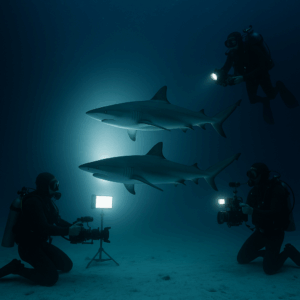Introduction
As underwater environments become increasingly central to architectural design, public attractions, and cinematography, the demand for precision in submerged lighting has grown exponentially. Whether you’re illuminating a coral exhibit in a world-class aquarium or creating dramatic underwater scenes for a film, the quality of light used beneath the surface is paramount.
Historically, underwater lighting was limited to monochrome or basic RGB solutions—sufficient for basic visibility or ambiance, but lacking in fidelity, nuance, and adjustability. However, recent advancements have ushered in a new era of RGB+White adjustable LED fixtures, offering unparalleled control over spectrum, brightness, and color rendering. This evolution allows designers and technicians to reproduce accurate and expressive lighting that translates beautifully both to the human eye and the camera sensor.
In this article, we explore the essential concepts that define color quality in underwater lighting, from Color Rendering Index (CRI) to RGB+White control systems, examining how they’re transforming everything from marine science installations to blockbuster underwater cinematography.
Tags: #UnderwaterLED #RGBLighting #CRI #RGBW #RGBPlusWhite #AquariumLighting #UnderwaterFilmLighting
What Is CRI and Why It Matters Underwater
Understanding CRI
CRI, or Color Rendering Index, is a quantitative metric that evaluates how accurately a light source reveals colors compared to a natural reference light, like daylight. Measured on a scale from 0 to 100, a higher CRI value indicates that colors appear more true and natural.

For example:
Why CRI Is Critical Underwater
Water absorbs and scatters light differently than air. Red wavelengths are absorbed quickly—within the first few meters of depth—while blue and green penetrate farther. This natural filtering distorts color perception significantly, especially under traditional low-CRI lighting.
Applications where high CRI is indispensable underwater:
Tags: #ColorRenderingIndex #HighCRI #MarinePhotography #AquaticDisplay #SubmergedLighting
RGB vs. RGBW vs. RGB+White: What’s the Difference?
RGB Lighting
RGB (Red, Green, Blue) lighting works by combining varying intensities of the three primary colors to produce a broad spectrum. It’s widely used for decorative effects and mood lighting but falls short when pure white light or nuanced tones are required.
Limitations:
RGBW Lighting
RGBW fixtures add a dedicated white LED—typically 5000K—to supplement color mixing and improve brightness and accuracy.
Advantages:
Still, RGBW systems are limited to a fixed CCT (Correlated Color Temperature) for white and can’t deliver the flexibility required for dynamic environments.
RGB+White (Tunable White)
RGB+White adjustable systems integrate tunable warm-to-cool white LEDs (typically 2700K–6500K), allowing for:
| Feature | RGB | RGBW | RGB+White |
| Color Range | Medium | High | Very High |
| White Accuracy | Poor | Moderate | Excellent |
| CRI Potential | Low | Moderate | High (90–95+) |
| Flexibility | Basic | Intermediate | Professional |
Tags: #RGBWLighting #TunableWhite #RGBPlusWhite #LEDColorMixing #LightSpectrumControl
The Role of White in RGB+White Adjustable Fixtures
White Light: The Hidden Hero
Underwater, white light provides clarity, contrast, and realism. It acts as a canvas upon which colors are projected and helps normalize the environment for cameras and the human eye.
Warm White vs. Cool White in Water
RGB+White fixtures empower users to blend white tones dynamically, allowing for real-time adjustments as scenes evolve or environments change.
Enhanced Depth and Texture
By combining white with RGB, you reduce “color shadows” and flat-looking subjects. White light fills in areas RGB alone cannot, especially on skin, rock textures, and organic forms.
Tags: #TunableWhiteLight #UnderwaterContrast #CCTAdjustable #RealisticLighting #WhiteChannel
Spectrum Control: Tunable CCT and Saturation in Water
Tunable CCT (Correlated Color Temperature)
Tunable white LEDs enable control over the perceived “warmth” or “coolness” of light. In underwater applications, this flexibility allows technicians to:
Hue and Saturation Controls
Advanced RGB+White systems provide:
Applications
Tags: #TunableCCT #SpectrumControl #UnderwaterAmbiance #HueSaturationControl #LightingScenes

Engineering Challenges of RGB+White Underwater Fixtures
High-quality underwater RGB+White fixtures must achieve:
Despite being underwater, RGB+White fixtures generate significant heat from multiple LEDs. Effective designs incorporate:
Underwater refraction demands even light distribution:
Professionals rely on intuitive and powerful control methods:
Tags: #UnderwaterEngineering #LEDThermalControl #WaterproofLighting #DMX512 #OpticalDiffusion
Applications and Case Studies
Underwater Cinematography
Filmmakers now use RGB+White fixtures to:
Case Example: A production shot an underwater dream sequence using RGB+White LEDs at 3200K with subtle magenta fill to create a surreal, warm effect while maintaining skin tone realism.
Aquarium and Coral Farms
Lighting is mission-critical in coral cultivation:
Case Example: A coral nursery in Australia reduced algae bloom by adjusting their spectrum with cooler CCT settings and lower blue saturation at night.
Luxury Pools and Public Water Installations
Architectural designers prefer RGB+White to:
Recreational Dive Attractions
RGB+White lighting is used in:
Tags: #UnderwaterFilmSet #AquariumLighting #CoralFarmLighting #LuxuryPools #WaterFeatureLighting

Choosing the Right RGB+White Underwater Fixture
Checklist for Specifiers and Buyers
When selecting an RGB+White underwater light, consider:
Vendor Questions
Tags: #LightingBuyersGuide #SpecSheet #HighCRI #WaterproofRGBW #LightingInstallation
Future Trends in Underwater RGB+White Lighting
Tags: #SmartLighting #UnderwaterAI #EcoLED #DeepSeaLighting #SustainableTech
Conclusion
As we’ve seen, RGB+White adjustable LED technology is not merely a creative tool—it’s a practical necessity for professionals who require both color fidelity and expressive flexibility in underwater environments. From film studios and luxury resorts to scientific institutions and coral farms, these advanced fixtures offer unmatched control and realism.
By combining high CRI, tunable CCT, and robust engineering, RGB+White underwater lights enable a level of precision and atmosphere that was previously impossible below the surface.
In an era where lighting is storytelling, performance, and science combined, RGB+White underwater fixtures represent the future of submerged illumination.
–The End–
Get in touch for free lighting customization